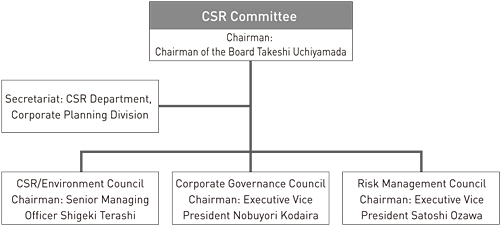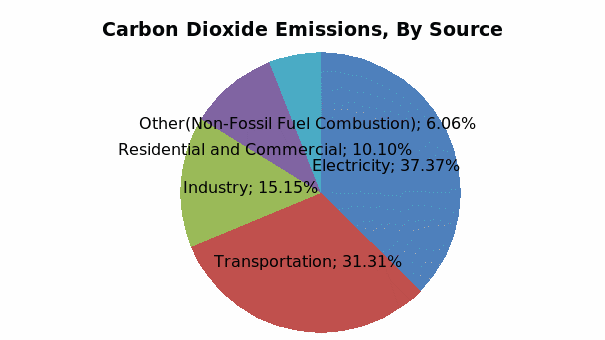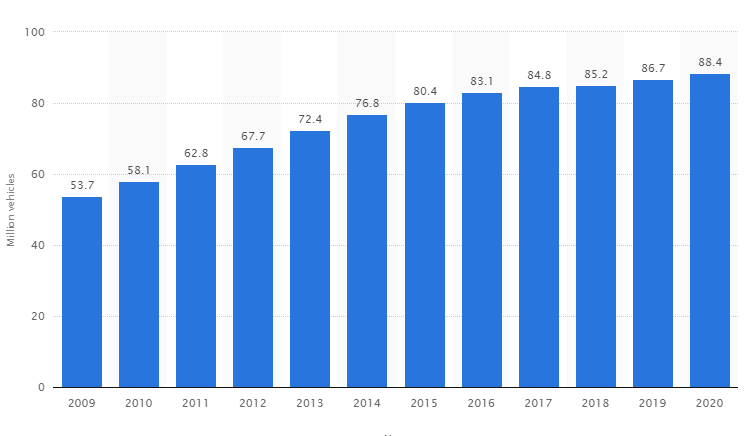Introduction
Corporate social responsibility refers to all the activities that organizations undertake towards improving the welfare of the people where they serve. Corporate entities operate as responsible citizens by undertaking numerous activities with the goal of making profits. Such activities can affect the society positively and negatively.
In recognition of the impact of corporate entities on the society, many organizations have put in place important measures for ensuring that they not only gain from the people through profits, but also give back to the society, to improve the lives of the people they serve. However, other CSR activities are deeply enshrined in an organization’s business.
They relate to the dedication of the organization towards an improved society through its activities. For instance, an organization that focuses on providing food products can carry out CSR activities by ensuring that the products offer important healthy benefits, as opposed to increasing lifestyle diseases or other related conditions that such foods can be associated with.
Another example of corporate social responsibility activities that are directly linked to businesses include the gradual improvement of electronics by a company to be more power efficient such that it can help the world in the push towards better energy-efficient and conscious world (Megumi and Takehara 3).
While CSR activities are always well intended, the outcomes of such activities vary from one activity to another and/or from an organization to another. This paper analyzes the hybrid car project, which is one of the most successful CSR activities by the Toyota Motor Corporation in terms of the positive impacts that the activity has had on societies and the business.
Toyota Motor Corporation
Toyota Motor Corporation is the world’s largest automobile maker and the 12th largest corporation in terms of market capitalization in the world. In 2012, the company became the first automobile that produced more than 10 million cars in a year (Racz, Muntean and Stan 438). The company has retained this position up to date.
The business makes various models of cars, including SUVs, saloon cars, pickups, and trucks. The company has also invested widely in other automobile companies such as Daihatsu, FAW, Fuji Heavy Industries, and Isuzu among others, thus making it truly a globally significant and magnanimous automobile company.
With revenues exceeding USD$ 252 billion as of the 2014 financial year, the Toyota Company is a highly profitable establishment. It employs more than 330,000 employees in its plants and offices in Japan and across the world. As a responsible citizen, the Toyota Company has been at the forefront in advancing important projects that are aimed at improving the lives of the people it serves.
As a business that is dedicated to making the transportation of people and goods easy through automobiles, the company has invested heavily in technology as a way of ensuring that its automobiles meet the customers’ needs at all times while at the same time guaranteeing that the clients get value for their money (Ghosh and Chitra 81). CSR activities are mostly important in ensuring that the company can achieve credibility and customer loyalty.
They are a good approach to confirming that the company uses its resources well to ensure that customers receive the best automobiles within their budget. In 2014, the company established the structure below where several officials were given strategic posts to work in collaboration with other stakeholders in addressing the company’s CSR issues.

Source: (Vogel 5)
For instance, in the world that is marked by increasing concerns about energy consumption and efficiency, the company’s technologies, research, and development have allowed it to produce some of the most fuel-efficient and affordable car designs in the automobile industry (Lindgreen and Swaen 3). This customer-focused business strategy can be viewed as an important CSR activity.
On the other hand, the company has undertaken numerous projects that are not directly linked to business and profitability, but also on the general improvement of communities. For instance, the company as carried many CSR activities that are focused on funding education in developing countries among other activities in the regions where it has operations across the world.
Hybrid Cars as a the Most Successful CSR by the Toyota Company
In a world where environmental consciousness has been more important than any other time, companies around the globe are required to exercise their role in a manner that will not contribute towards environmental degradation, but instead promote technologies and activities that will guarantee environmental protection and sustainability.
With the advent of mass production due to industrialization and the increasing population, industrial pollution because of human activities is the main contributing factor towards environmental undertakings that endanger the stability of the world’s environment. Greenhouse gases such as carbon dioxide, methane, and the hydrofluorocarbons (HFCs) are some of the most lethal environmentally degrading gases whose effects have been felt through global warming and its effects on the international climate (Barnea and Rubin 73).
One of the most contributors towards these greenhouse gases is the motor vehicle or automobile industry, which produces lethal combinations of gases through exhaust gases to the environment. This situation contributes to global warming and consequently environmental degradation. Currently, more than 1 billion cars roam the streets of the world.
Each car has its gaseous emissions, which add a share of greenhouse gases that are increasingly contributing towards global warming of the environment. Currently, the transportation sector, which is dominated by the automobile sector, accounts for more than 31% of the 30 billion metric tons of carbon dioxide that are emitted from human activities (Hopkins 34). Indeed, the emissions are increasing.
It is expected that if proper strategies towards the reduction of greenhouse gasses are not implemented through strict policy and legislation changes, the effects of greenhouse gases will make the environment almost inhabitable by 2050. The pie chart below shows the carbon emissions in the world based on the source using the 2014 estimates.

Figure 1: Chart Showing Carbon Emissions by Source
Source: (Hopkins 34)
The transportation sector takes 31%, which indicates a significant amount carbon emission into the atmosphere. In the wake of the dangerous phenomenon that the global warming is threatening to cause, many lobbyists and government agencies have put protracted measures towards reducing the usage of gasoline, which is a major cause of the gases that are emitted from industrial activities and automobile industries (Hopkins, 35).
The Toyota Company has been at the forefront in ensuring that it produces environment-friendly vehicles. Through such an approach, it has managed to reduce the gas emission to levels that the earth can cope with in order to ensure the sustainability of human activities and the environment. Many terms such as energy efficiency and fuel switching have been used to refer to environmental sustainability and responsiveness.
Carbon capture, sequestration, and energy conservation have emerged to provide an important opportunity through which environmentally degrading gasses and emissions can be reduced or controlled. In recognition of the need to put the world on a path towards environmental sustainability, the Toyota Company has invested heavily in cars that have better fuel efficiency and low emissions.
The company has invested heavily in delivering family-sized cars to the masses. Besides, based on the technology of fuel switching, the company has allowed a room for the switching of the car’s engine between gas and electricity, hence reducing the amount of fuel that is consumed per mileage and consequently decreasing the amount of emissions to the environment (Barnea and Rubin 74).
The Toyota Company’s most fuel-efficient and environmentally friendly cars are referred to as the hybrid cars, which have been at the forefront in revolutionizing the automobile industry towards environmental protection. So far, the company is the world’s leader in the manufacture of hybrid cars, which are majorly in two models, namely, the Prius and the RAV 4 EV. To date, the Prius is still in the production process while the RAV 4 EV was discontinued in 2003.
A brief history of Prius shows that the car was first mass-produced from the general market in 1997, following more than two years of intensive research and fine-tuning of the hybrid technology that incorporated gasoline and electricity.
At the time, the Environmental Protection Agency (EPA) had put forward new guidelines for what a fuel-efficient and environmentally friendly car ought to have been in terms of emission and fuel consumption (Lindgreen and Swaen 5). The Toyota Company was the first to meet these new guidelines. It was also the first to claim the first automobile ever to produce a hybrid car for the masses.
It adopted a technology that was way ahead of its time as evidenced by the number of years it took other companies to begin mass-production of hybrid cars to the market (Lindgreen and Swaen 3). As of 2014, more than 4 million hybrid cars of the Prius design by the Toyota Company have been sold, thus making the car the most successful hybrid car in the world, accounting for 67% of all the sales of hybrid cars in the world.
This move is a major success story when it comes to upholding CSR goals of safeguarding the environment. When the company launched its first hybrid car in 1997, the move was a clear sign of its dedication to providing the world with cars that were not only fuel-efficient but also environmentally friendly.
Hence, this period ushered in a new era where a motor company was for the first time taking an important corporate social responsibility of ensuring that its activities did not come at a heavy cost to the global community (Racz, Muntean and Stan 440). In the year that followed the launching, Prius was voted the car of the year in Japan.
The award was a clear sign of the recognition of the positive impact that the company was dedicated to having on the society. The car’s 1.5-Litre engine could clock 50 miles per gallon (mpg). This fete had not been realized on a commercially available car. The car also used electricity power, which would be alternated with the gas, to make it the first car to use this fuel-switching technology on mass-produced cars (Ghosh and Chitra 85).
After gaining popularity in Japan, the company extended this significant social responsibility beyond the borders. In fact, it began exporting the car in 2000 to global enthusiasts who were eagerly waiting to land their hands on the car. It became an internationally popular car. Its success fuelled the Toyota Company to invest even more towards the development of new-generation models of the car.
In 2003, the second-generation cars of the Prius model entered the market. It combined major improvements that strengthened the Toyota Company as a world leader in hybrid cars in terms of their popularity, profitability, and environmental friendliness.
While still maintaining the same gas capacity of 1500cc, the new model had a better battery output capacity that reached 50kW and hence a better performance of the car when using electrical charges to power itself (Ghosh and Chitra 84). In 2007, the company reached a major milestone where more than 1 million hybrid cars had been sold in the car’s short history of 10 years.
The third generation of Prius hybrid cars debuted in 2009 with major improvements in energy consumption and gas emissions. For instance, the car, which then had an improved 1800cc capacity, had a better fuel efficiency of 72 mpg and a gas emission of only 82 grams per mile (Hopkins 39). This advancement was highly environmentally friendly.
After concentrating on the Prius model since 2010, the company has launched new models of hybrid cars, which are in line with its goal of being the leading car manufacturer of environmentally friendly cars in the world. Although other models of hybrid cars have come up from other automobile companies, the Toyota Company’s hybrid cars account for more than 67% of all the world’s hybrid cars (Racz, Muntean and Stan 441).
Despite the fact that new models have emerged, the company has been instrumental in showing that the hybrid cars are the future of automobile industry and that other companies will have to follow suit if they want to remain relevant in the increasingly environmentally conscious world of today. So far, in the footsteps of the Toyota Company, other companies have followed with their models.
From 53.7 million hybrid cars in 2009, it is anticipated that over 80 million such cars will be on the roads as shown below.

Figure 2: Hybrid Cars Numbers 2009-2020
Source: (Racz, Muntean and Stan 441)
Toyota CSR Impact on Its Value
While the Toyota Company may have been driven by the need to develop a new technology that will promote better environmental friendliness of the car models, such an excellent move has acted to increase the company’s profitability and reputation.
Through its hybrid car models that cover at least six car models, which include Avalon Hybrid, Camry Hybrid, Prius, Prius V, Prius C, and the Prius Plug-I, the company’s hybrid line of cars is the most successful in the world (Ghosh and Chitra 82). It has positively influenced the company’s profitability and revenues. In 2013, the company accounted for 80% of all hybrid sales of cars in the global market.
At the company’s level, the hybrid cars accounted for more than 14% of the total car sales at the company (Racz, Muntean and Stan 439). This figure is expected to rise to 30% by 2020. The impact of the hybrid cars on the Toyota Company in terms of its value has been significant. The achievement has placed the company as a leader in the automobile technology that focuses on fuel efficiency and environmental friendliness as per the EPA guidelines.
The popularity of the car in both the domestic and international market is a clear sign that customers around the world view the company’s cars as more environmentally friendly and fuel efficient as compared to other models that are available in the market.
Generally, the company’s hybrid cars have allowed it to be viewed as highly dedicated to the development and implementation of more fuel-efficient cars that are also affordable and responsive to the needs of the customers, as well as the changing world of environmental enlightenment. Apart from the high reputation, the company has achieved high levels of profitability and production capacity, with more than 10 million cars being sold in 2012. This record is yet to be broken by any other company in the automobile industry.
A good CSR does not just give value to the community, but also to its shareholders. There is no better way to explain this claim other than using the Toyota Company as a working illustration. With a market share of more than 67%, the Toyota’s hybrid cars account for approximately 14% of its revenues.
This figure is expected to rise to 30% by 2020. The company sees a strong future in its hybrid cars based on their high efficiency, credibility, and the company’s superior image in the sector (Ghosh and Chitra 84). While this marker is rapidly changing with new entrants, as well as the reducing popularity of the hybrid models due to the low oil prices that are prevailing in the market, the Toyota Company’s hybrid will continue to be popular to the extent of creating more value for the company in both the short-term and the long-term.
The company’s investment and continued research on technology, research, and development has allowed it to be a pacesetter in the world, which is becoming increasingly environmentally conscious while calling for accountability of corporate entities as far as the impact of their activities on the environment are concerned. Overall, the company has done a commendable job that other organizations should emulate, especially in terms of balancing between profitability and benefiting the general society.
Conclusion
Corporate social responsibility activities allow an organization to give back to the society by either providing products that benefit the organization while at the same serving customer needs in a responsible and effective manner or providing an assistance that goes towards elevating community’s problems or challenges.
In other words, the CSR allows an organization to be a responsible member of a community by contributing positively to the betterment of the public where possible. However, while the CSR activities are good intended, the outcomes of such activities vary from one organization to another and/or from one activity to another.
As a global automobile company, the company operates in an environment where automobiles have been blamed for the increasing gas emissions that are causing global warming, which has been affecting the environment. As a responsible citizen, the company has invested heavily in the availing of hybrid cars to masses. These cars are highly fuel-efficient.
They combine the use of gas and electricity, thus ensuring more fuel efficiency and environmental friendliness. Concisely, the company’s hybrid cars are an important example of a successful CSR activity, which has had a significant impact on the company’s reputation. The activity has increased the company’s value to become the world’s largest automobile maker.
Works Cited
Barnea, Amir, and Amir Rubin. “Corporate social responsibility as a conflict between shareholders.” Journal of business ethics 97.1 (2010): 71-86. Print.
Ghosh, Priyanka, and Charles Chitra. “Hybrid cars: the chauffeur of next-gen world’s automobile market (with respect to four wheeler cars).” International Journal of Physical and Social Sciences 5.4 (2015): 80-100. Print.
Hopkins, Michael. The planetary bargain: Corporate Social Responsibility Matters. New York, NY: Routledge, 2012. Print.
Lindgreen, Adam, and Valerie Swaen. “Corporate social responsibility.” International Journal of Management Reviews 12.1 (2010): 1-7. Print.
Megumi, Suto, and Hitoshi Takehara. The impact of Corporate Social Performance on Financial Performance; Evidence from Japan, 2013. PDF file. Web.
Racz, Andrea, Ionuţ Muntean, and Sergiu-Dan Stan. “A Look into Electric/Hybrid Cars from an Ecological Perspective.” Procedia Technology 19 (2015): 438-443. Print.
Vogel, David. The Market for Virtue: The Potential and Limits of Corporate Social Responsibility. Washington DC: Brookings Institution Press, 2005. Print.